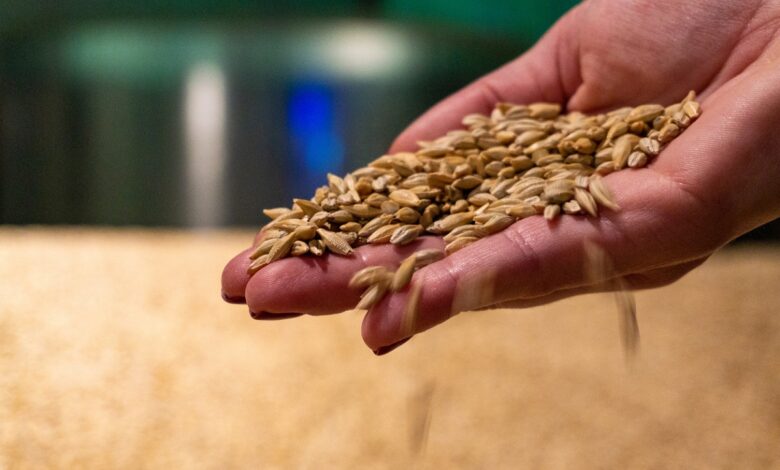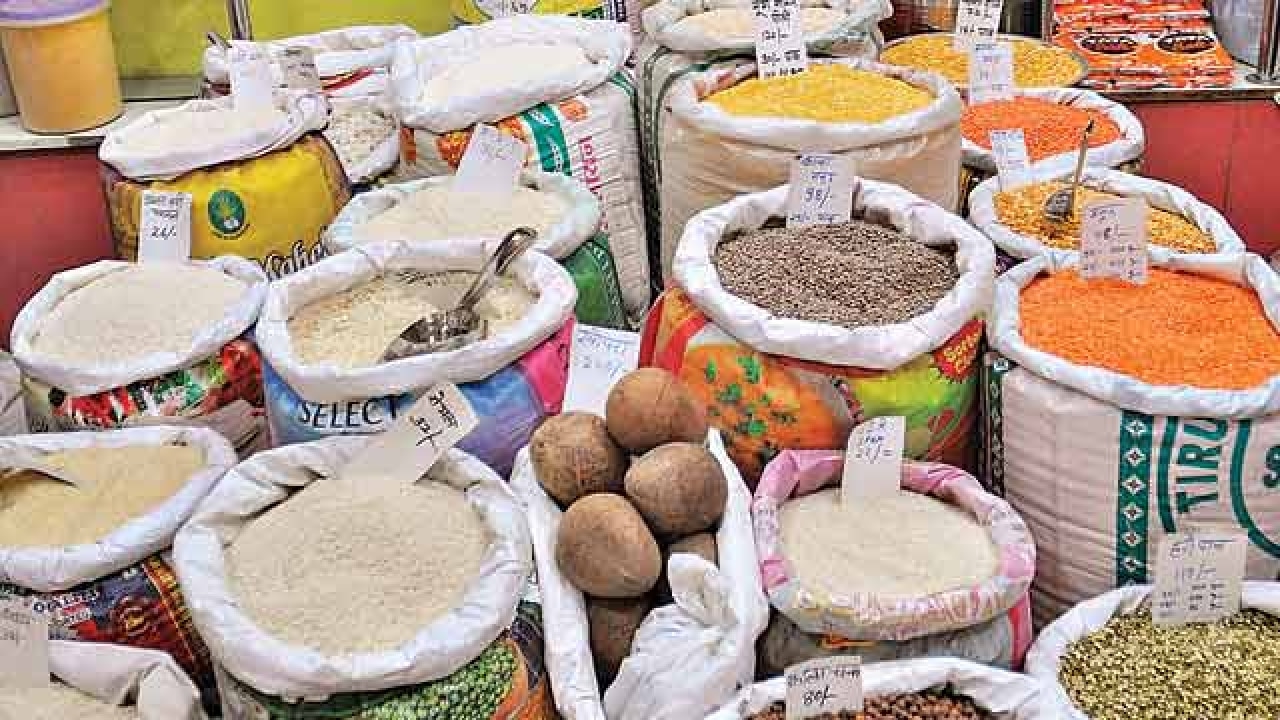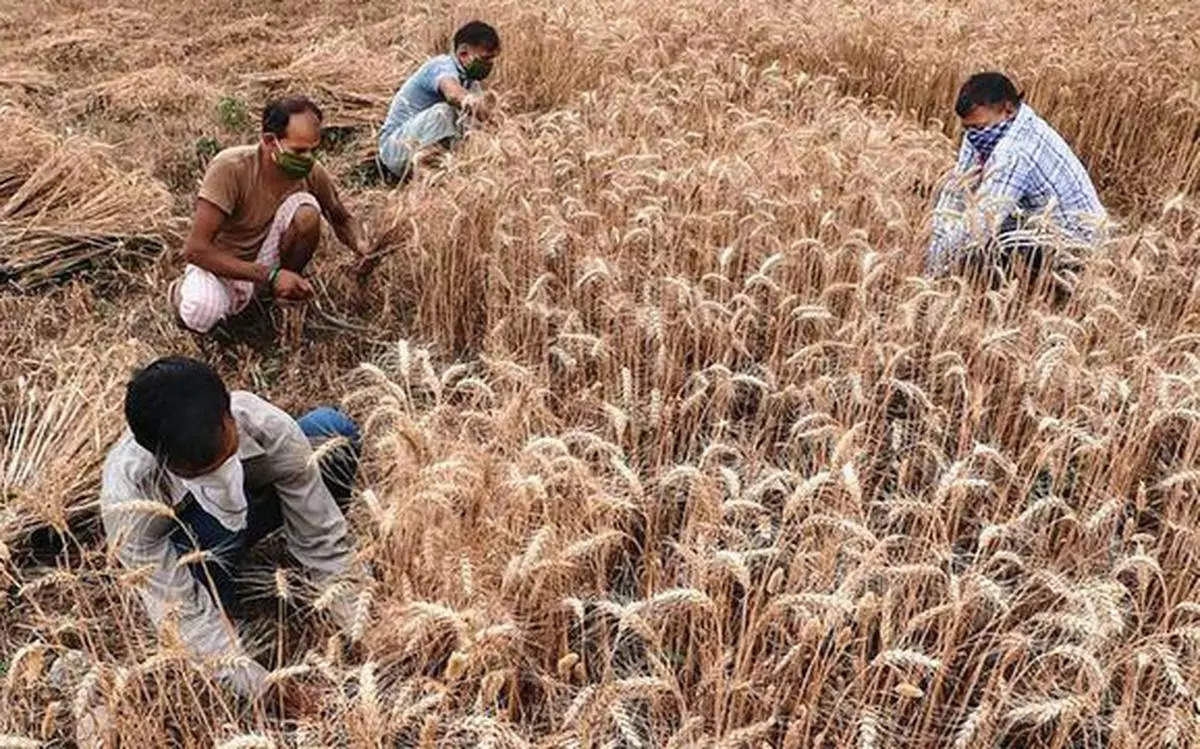Why does India Bans Exports of Wheat?

The Indian Government prohibits Exports of Wheat.
The Indian Government has Stopped the Export of Wheat to the other. According to the Ministry of Commerce and Industry, a sudden spike has been seen in the global market of Wheat.
India had taken this sudden step due to particular concern about the situation of shortage of Wheat not happening in India.
Hence, this step is taken keeping in mind the food security of our country India.
But this step of banning the Export of Wheat is criticized by the other nations of the world. Other Countries are indeed upset with India.
The reason for criticism is the “U-Turn” of India. A few months later, India had mentioned and had a word with the other nations that India had told to do and expand the Export of Wheat. But this sudden U-Turn of India is making the other countries upset by his Statement, which is why he criticizes India at the international level.
Furthermore, the price of Wheat will hike in the international market. The products made up of Wheat are also supposed to have a price rise, including biscuits, bread, pasta, noodles, porridge, and many more.
But you might be wondering why this is happening? So let’s go inside the Reasons.
Russia-Ukraine War
Russia and Ukraine Botha are significant producers of Wheat, and both the Countries export wheat to the international market on a vast scale. But since Russia invaded Ukraine, it hit the Supply of Wheat in the global market hard due to cache.
This cut in Supply has led to the increase in the Market prices of Wheat in the international market.
For India, this short supply situation could act as an ample opportunity. Considering this grand opportunity, India had words with the other nations and agreed to continue the Export of Wheat even more in the international market.
India had agreed to export Wheat to Morocco, Tunisia, Indonesia, Turkey, and other countries.
But Suddenly, the Statement given by India became a reason for disappointment, and the other nations criticized India.
Unavailability of sufficient Stock
This time India doesn’t have a sufficient stock of food grains, including Wheat. This is seen because of the “Heat Wave.”
Now let’s Understand the meaning of Heat Wave. In the past two months, the heat effect has been inversely seen. Due to this, the production of grain specialized in the west was very much ineffective. It had led to the damage of crops, which included Wheat.
Food Security of India, which used to have a large stock of food with themselves, also seems to have insufficient stock.
Keeping all these points in mind, India decided not to Export more because if it keep on exporting so much, then in future
India may face the Situation of Shortage. This sort of lack of shortage had already happened with Indians due to Excess exports. Hence, India decided to stop and ban Export.
Let’s have a detailed analysis of this critical condition
The global market is down. The prices of commodities are high. Fuel prices are also increased, and there is a worldwide shortage of supplies.
This situation started in March 2020 when the lockdown began due to the Covid-19 pandemic. Like that first wave, second wave, and third wave; this way, almost two years went just that, and then the Russia -Ukraine war started earlier this year.
Since then, the market has been either down or stagnant. More than passive, it is heading downwards.
So overall, you need to understand that the global market is down and the prices of commodities are high. Similarly, the prices of Wheat have also increased in the international market, which is why India jumped in and said to supply Wheat to the world.
If you remember, on April 15, the Indian foreign minister S Jaishankar met the United Nations Chief. They discussed many things related to food and energy security. Then-Prime Minister Modi spoke to United States president Joe Biden and told him that India could send Wheat to other countries if World Trade Organization rules were relaxed. That is where India offered to help countries facing food shortages by supplying Wheat.
If you look at India’s wheat production from the 20021-2022; crop season, which ends in June, it is officially projected to be around a 106.41million tons. This amount is 3.8 million tons less than last year’s output. This means that Wheat production in India is comparatively lower this year than the previous year.
But kindly don’t judge the numbers because although the wheat production is less in terms of numbers as compared to last year, it is enough for India, and it makes India self-sufficient.
So that’s why Prime Minister Narendra Modi said openly that India could feed the world. But in the first week of May, south Asia received strong heat waves, which became the primary reason why wheat production in India was projected to be low this year.
Anyhow, apart from the heat wave, there was one more thing that happened, and that was the prices of Wheat in India. The domestic prices of Wheat went record high, forcing the Indian Government to stop the wheat supply to the international market.
In other words, when prime minister Mr. Narendra Modi said that India could feed the world, this was where things backfired and India, despite being the second-largest wheat producer after China, had to stop its Exports.
And it is needed because first, we must stabilize our own country’s food price before exporting to others.
Why did the domestic prices of Wheat go high?
If you remember, last year, in November, the Government of India had three farm bills; if you also remember, the framers, mainly from Punjab and some from Haryana, created issues and forced the Government to withdraw these farm bills. If you have read those farm bills, then it was good, but because of social media, there was a wrong interpretation by some leaders for political gains. Then who created a false narrative, and what made many wrong speculations and assumptions regarding the bills, which in turn created a negative sentiment among the public, even among the educated citizens.
But the second bill is The Farming Produce Trade and Commerce ( promotion and Facilitation) Bill, 2020. It talks about allowing farmers to sell their goods outside the Mundy anywhere within or outside any state.
Because earlier what happened was the agriculture trade could only be in the APMC yards like warehouses and cold storages and Mandies, and the state government controls all these Mandies through the agricultural Produce Market Committee (APMC), and this is what is used to create restrictions for farmers.

If you are a prominent scale farmer and want your product to be protected by the Government, then you must notify APMC or trade with only APMC Licensed traders. Many people criticized the bill because they felt the Government was trying to get out of the agriculture business.
Just think about it, farmers have the choice to sell the produce to the private players, and then the farmer’s income will also depend on the ups and downs of the market. Many people assume that the private players are the smart ones and will exploit the farmers. So this was the reason why they criticized the Government and who blamed the Government.
Central-owned food corporations of India and state agencies undertake procurement at a minimum support price to meet the requirement under the public distribution system and other welfare schemes, and here farmers include both small as well as big farmers because big farmers have a dear that if the Government does not secure their produce then will bear the enormous loss.
That is when the whole idea of APMC came into existence.
If a farmer sells their produce to APMC traders, then their product is secured by the Government, and the state government controls these APMCs. APMC is nothing but middleman brokers. They govern the agricultural market at the local level.
You can think of APMC as a governing body for local farmers of a particular area. So naturally, there is corruption and politics involved in APMC. If you look at states like Haryana and Punjab, the APMC is quite developed here, which is why there is so much issue in repealing the farm bills.
Because the Modi government wanted to decentralize the agricultural market, they tried to free the agriculture at the local
level from the APMCs so that every farmer, whether big or small, has an option of both selling in Mundy directly to a private player.
If you notice that the Farm Bills were trying to create a one size fits all approach, this was not liked by the farmers of Punjab and Haryana. As 2nd bill promotion and Facilitation, Bill would have created a parallel marketplace and legally allowed the farmers to sell their produce outside the APMC Mundy’s
Here the point is that yeh second bill if passed, would have given legal support to sell their produce outside the APMC Mundy’s, but then many states had already allowed private markets to purchase directly from the market even before the Modi government bought these bills.
The point is that if the central Government passed the bill, it would become law for every state in the country, which states like Haryana and Punjab were not in favour of because they would lose revenue from agricultural trade. Who created so much drama?
Before 2020 farmers had the option of selling their produce outside the APMC Mundy’s, so the government procurement of Wheat from the farmers this year was low. Because farmers sold their Wheat to private traders who were giving higher prices than what the Government is giving as MSP
For example, if the MSP of Wheat was set at a 2015 rupee per quintal, the Farmers were selling their Wheat to private traders because they were paying more. This way, farmers were earning more. Now when the farmers sold instead of the Government to the private seller led to a severe shortage of Wheat in Government go downs and now that private traders bought more Wheat from the farmers at a higher price. Naturally, the price at which Wheat was sold to the consumers also increased. This was the first problem that emerged.
There are 8-11 states in India where the hover of India gives free Ration. Usually, you will see that you have to pay a certain minimum amount to get Ration food. But there are 8-11 states where the Government of India gives free Ration.
That Wheat is also one of the commodities given to the public through Ration shops or public distribution system.
PDS ( Public Distribution System) is operated jointly by the central and state union territory government through FCI.
Now, there is a severe shortage of Wheat in Government go downs. Naturally, the Government has to cut down the Wheat that is supplied to Ration Shops. This will have a further compounding effect on the families that live below the poverty line.
Instead of Wheat, the Government of India increased the Supply of Wheat. As you may know, many people in northern India do not have the habit of eating rice, which has stirred some political sentiments among the north Indian public. Still, we also need to understand where the Government gets those food items.
These are grains and other essential commodities from the Farmers at a Minimum Support Price. The central Government has to buy these food items from farmers through taxpayers’ money, and then they are stocked in government warehouses in the food corporation of India. From there, essential commodities are supplied to the public through the Public Distribution System.
This time because of the Russia Ukraine war, the price of Wheat went high in the international market, and then if you see Russia and Ukraine, both became significant exporters of Wheat. When the price of Wheat in the global market instead of the government market, private traders brought more Wheat from the farmers, and that to a higher price than the Government went down started getting empty and that’s how the Government of India put a stop on the Export of Wheat.
This is the whole Story behind the Government of India’s ban on wheat export.
The global community that is G7 members started criticizing India because India banned the Export of Wheat.
Conclusion
The Government of India will only import on a case-to-case basis. For example, if a country is in extreme need of food grains, then the Government of that country can contact the Indian Government. Government-to-government deals will occur in the best affordable way. We, the Indians, did not return from a promise to feed the world. It’s just that some conditions have changed due to market uncertainty, but whatever it will be possible, India will do so. If you see, the core principle of helping by giving food still exists, but the quantity of Supply is not the same as before.
Edited by Prakriti Arora







